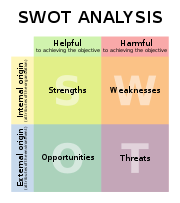Wiki Resources/Wiki Analysis
Home | Learning Theories | Instructional Design & eAuthoring | ePortfolio | Storyboard | Wiki Analysis | Communication Tools | Resources Analysis | Group Work | Teaching Philosophy | Accessibility | Glossary
 Wiki AnalysiseditThe main objective of this page is to facilitate a group discussion as to why we decided on a wiki as the learning resource of our choice. We will discuss the advantages and disadvantages of the wiki in its role as a lifelong learning object. An important consideration in our choice of using a wiki as learning resource is the fact that it is free to everyone. Additionally we wanted to create a dynamic, evolving resource that can be added to and changed globally in keeping with technological advances and learning research. We felt that as the wiki is interactive and available to everyone it would provide an ideal solution to our requirements. Therefore it is a tool that will remain alive, being continually adjusted and updated by ourselves and more importantly by future elearning students. Learning OutcomeseditAt the end of this chapter the learner will be able to:
 We would appreciate if you give us your contribution in this project.
If you have any query, suggestion or feedback, don't hesitate to contact us sending a message to our email:
Firstly, we start our discussion introducing the ADDIE Model, as this will be an important tool for our project structure. As the initial steps evolve under the idea of Analysis, Design and Development, where we are attempting the major steps that allow us to identify the tools that will support our project. Afterwards, it is very important to implement our decisions and generate an evaluation that indicates if our project will be able to achieve our initial objective, of being a valuable resource for future students.
|
The ADDIE ModeleditThe ADDIE model is a systematic instructional design model consisting of five phases: Analysis, Design, Development, Implementation, and Evaluation. Consequently, we decided start our project following the ADDIE Model five phases to help us organize ideas and the structure. Each step has an outcome that feeds into the next step in the sequence. As instructional designers we must follow this five phases to construct an ideal learning object. The five phases of ADDIE are as follows:
|
Wiki AnalysiseditThe main objective of this section is to discuss the wiki tool starting with the PMI, and following with the SWOT model. In this page we are presenting our analysis in a table format, but we are also doing this analysis in the following page: Alternative Analysis in order to facilitate reading,so we have removed tables format and colours added to the structure that is presented in our main page. PMI AnalysiseditHaving decided on the topic for our eLearning resource and constructed our Storyboard, we now consider that a PMI Plus, Minus, Interesting) analysis of the tool we propose to use for the development of this resource is the next step in our project. The PMI analysis will provide valuable information on the pros and cons of using a wiki to develop an eLearning resource.
SWOT AnalysiseditSWOT analysis is a strategic planning tool that is exceedingly valuable. It involves identifying strengths, weaknesses, opportunities and threats. After the PMI analysis is done, it is very important to condense all the information into a SWOT (Strength, Weaknesses, Opportunities, Threats), thus we are able to connect all the valuable information that help us to decide if the wiki is the optimal resource for our project. For more information on SWOT Analysis please see this article on What is SWOT Analysis
"What strengths does wiki have as a mechanism for enterprise collaboration?"
|
ConclusionseditThe evaluation of pros and cons of our resource have been done (see table 1 for the PMI and table 2 for the SWOT analysis). We have discussed and analysed many options, and finally after looking at all possible tools (i.e. blogs, websites, PPT, ePortfolio, etc), our group think that the most suitable tool for our project is the Wiki. At this point we would like to bring back into scene our original question:
In answering this question, our major concern have been how could we help and facilitate future students learning, as we think that our main goal is to pass learning and eLearning experiences to those students. Therefore, our project final objective is to act as a legacy, we also want to add an important distiction to our project: Our tool needs to keep growing and developing, so knwoledge can be expanded and transmitted. For this reason, we think that the best way to keep this instrument alive, is to allow other people to interact and contribute to it, and the best way on achieving this goal is to based our resource in a wiki platform. Our group sought a tool that would enable the simultaneous involvement of all elements of the group, allowing the collaborative construction of knowledge in a balanced and gradual manner. We wanted, at the same time, to avoid the division of tasks because, if applied it, would be impracticable a collective practical learning of the whole content, techniques and models used in our project. One of the advantages of using Wiki as a tool for knowledge construction is the fact that it allows this interaction to insert content and, facilitates eLearning students the opportunity to learn how to make a learning object with these features. Throught the PMI and SWOT analysis we have been able to identify the positives and negatives aspects of the wiki. However, we think that most of the negative aspects can be controlled, or even used as a source to improve the wiki. Thus, as a group has arrived to a consensual agreement where we identify the wiki as the best tool to act as the portal, or initial door to open discussion and generate knowledge to support the improvement of the MSc in Applied eLearning. |
Referencesedit
|

